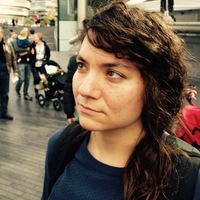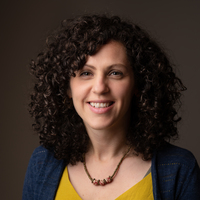Books by Stephen Pascoe
Edinburgh University Press , 2020
Explores the representation of minority cultures in museums of the Middle East and North Africa

The recent wave of revolutions across the Arab world has brought to the surface the contradiction... more The recent wave of revolutions across the Arab world has brought to the surface the contradictions in popular understandings of the Middle East and North Africa. The place of the region in the global history of modernity has been unsettled yet again. It is possible to identify several major trends in responses to the momentous events, coinciding with various stages in the unfolding of the revolutions. Firstly, many commentators embraced the early stages of the uprisings, precisely because they were seen to fulfil a long-overdue historical destiny of democratic flourishing — the expression of a modern teleology for some, or a postmodern emancipation for others. Alternatively, the ‘modernity’ of the recent uprisings was understood in the very shallow, popular sense of ‘contemporaneity’. A third reaction to the Arab revolutions and the civil strife brought in their wake has been a return to viewing the region as a mosaic of different religious communities, all mutually hostile and suspicious of one another. Yazidis, Alawis and Coptic Christians are suddenly capturing the imagination of Western readers. We read of ancient tribal hatreds and complex animosities incapable of resolution, this sectarian condition being understood as a
permanent impediment to social peace and material progress.
This book continues the slow work begun by critical scholars to re-imagine the region in its full complexity. It challenges the counterproductive excesses of Western engagement, the self-interested Machiavellianism of international politics, and the xenophobic prejudices of much mainstream culture. In the current political climate, where images of destruction and mayhem prevail, the task of critical engagement in the Middle East and North Africa is evermore crucial.
Book chapters by Stephen Pascoe
The Art of Minorities: Cultural Representation in Museums of the Middle East and North Africa , 2020
This chapter takes the Azem Palace of Damascus as a paradigmatic example of postcolonial ethnogra... more This chapter takes the Azem Palace of Damascus as a paradigmatic example of postcolonial ethnography in the region, demonstrating the ways in which the practices of research, collecting and exhibiting that it facilitated actively participated in a process of self-redefinition and resuscitation after the trauma of colonialism.

Writing the history of modernity entails a certain conceptual contradiction. The idea of the 'mod... more Writing the history of modernity entails a certain conceptual contradiction. The idea of the 'modern', after all, expresses a sense of 'now', the contemporary moment, the world as it currently exists. By its very nature, modernity implies a drawing away from the past. It is future oriented, looking ahead to new possibilities. To speak of modernity in a past tense still seems a little jarring. Even if proclamations of 'postmodernity' at the end of the last century encouraged us to relegate modernity to a historical epoch, there is a sense that modernity is still very much with us. In popular parlance, such phrases as 'the modern world' or 'in this modern age' are powerful shorthands, conveying the rhetorical power of modernity to wipe away all that is deemed to stand in its path. The 'modern Middle East' is another of those shorthands, one often present in the titles of university courses, or of academic surveys of the region. Yet what exactly does it mean? Precisely how did this region become modern and what has modernity implied for the societies of the Middle East? As the following historiographical sketch illustrates, these questions of modernity have long over - shadowed the field of Middle Eastern history.
Papers by Stephen Pascoe

Radical History Review, 2019
In April 1931, boycotts of foreign-owned electricity companies were launched across multiple citi... more In April 1931, boycotts of foreign-owned electricity companies were launched across multiple cities of the Arab Levant under French Mandate. This article argues that the boycotts drew on an established local culture of boycotting that was shaped by the social relations formed under the system of “concessionary imperialism.” These “electric boycotts” took on increased potency in the context of the constrained
opportunities for anti-imperial protest under the interwar system. They
were part of an oft-forgotten history of nonviolent civil disobedience, overshadowed by more violent expressions of opposition to colonial rule. It is argued that the 1931 and 1936 boycotts were novel for the threat of regional conflagration that they posed, as well as the increased “internationalization” in the framing of their meanings. Gandhism, Communism, and later, Fascism, provided competing poles of
reference for anti-imperial activists in French Mandate Syria across the decade of the 1930s.
Peer-reviewed conference publications by Stephen Pascoe
Green Fields, Brown Fields, New Fields: Proceedings of the 10th Australasian Urban History, Planning History Conference, Jan 1, 2010
The erstwhile Housing Commission of Victoria (HCV) was the foremost advocate of 'urban renewal' i... more The erstwhile Housing Commission of Victoria (HCV) was the foremost advocate of 'urban renewal' in Melbourne during the decades following World War II. Much has been written on the HCV's aborted Carlton Redevelopment Scheme -an ambitious if unpopular plan to rebuild the suburb along Modernist lines -however most accounts have focused on the successful battle waged by citizen activists against its implementation.
This paper offers a critical survey of recent trends in the reconstruction and reinvention of Bei... more This paper offers a critical survey of recent trends in the reconstruction and reinvention of Beirut following the civil war (1975-1990).
Public essays by Stephen Pascoe

Humanity Blog, 2024
Majdal Shams has long been a heartbreaking place. Since June 1967, when Israel launched its blitz... more Majdal Shams has long been a heartbreaking place. Since June 1967, when Israel launched its blitz on the Golan Heights as part of the shock-and-awe campaign of the Six Days War, the village has been split in two. During the Naksa, thousands of local civilians were pushed north by the invading Israeli soldiers; the remainder steadfastly remained. As a consequence, today half of the community live, displaced, under unchallenged Syrian sovereignty, north of the 1967 ceasefire line; the other half of the community live just south of that line in Israeli-occupied Syrian territory. The forcible displacement of Syrian citizens that produced this separation has been described as the "largest ethnic cleansing in history since the end of World War II", as measured by the density of people forced to leave in relation to the geographical area targeted. The prewar population of 142,000, living across 340 villages and farms, was reduced to 6,011 individuals, with only five villages permitted to remain. Of these five surviving villages that avoided depopulation and demolition, Majdal Shams wasand remains-the largest.[1] If the ethnic cleansing of the Golan Heights thus constituted a kind of concentrated Nakba, enacted with greater efficiency and speed than its predecessor and template, Majdal Shams is the most visible symbol of this displacement.
Arena (No.10, Winter 2022), 2022
Refereeing We formally referee any published article if requested to. Payment Arena does not rece... more Refereeing We formally referee any published article if requested to. Payment Arena does not receive government funding. Published contributors are offered a one-year gift subscription to Arena.
Arena Magazine, 2019
This essay revisits the global problem of automobile dependency in the light of the worsening cli... more This essay revisits the global problem of automobile dependency in the light of the worsening climate emergency. It argues that in place of seeking individualised automobility solutions that seek to exonerate the individual, we must urgently find collective solutions that meaningfully grapple with our complicity in the making of an uninhabitable earth. It was awarded the inaugural Alan Roberts Prize by the Arena Foundation for "best essay related to ecology, social life or a politics for the future"
Teaching Documents by Stephen Pascoe
Humanities Core Handbook: Animals, People and Power 2020-2021, 2020
This chapter offers an introduction to undergraduate students on how to assemble a historiographi... more This chapter offers an introduction to undergraduate students on how to assemble a historiographical review. The particular case study is on animals in colonial Latin American history, although the methodological insights are more universally applicable.
Book Reviews by Stephen Pascoe
Journal of Australian Studies, 2023
Review of Clinton Fernandes' book Sub-Imperial Power.










Uploads
Books by Stephen Pascoe
permanent impediment to social peace and material progress.
This book continues the slow work begun by critical scholars to re-imagine the region in its full complexity. It challenges the counterproductive excesses of Western engagement, the self-interested Machiavellianism of international politics, and the xenophobic prejudices of much mainstream culture. In the current political climate, where images of destruction and mayhem prevail, the task of critical engagement in the Middle East and North Africa is evermore crucial.
Book chapters by Stephen Pascoe
Papers by Stephen Pascoe
opportunities for anti-imperial protest under the interwar system. They
were part of an oft-forgotten history of nonviolent civil disobedience, overshadowed by more violent expressions of opposition to colonial rule. It is argued that the 1931 and 1936 boycotts were novel for the threat of regional conflagration that they posed, as well as the increased “internationalization” in the framing of their meanings. Gandhism, Communism, and later, Fascism, provided competing poles of
reference for anti-imperial activists in French Mandate Syria across the decade of the 1930s.
Peer-reviewed conference publications by Stephen Pascoe
Public essays by Stephen Pascoe
Teaching Documents by Stephen Pascoe
Book Reviews by Stephen Pascoe
permanent impediment to social peace and material progress.
This book continues the slow work begun by critical scholars to re-imagine the region in its full complexity. It challenges the counterproductive excesses of Western engagement, the self-interested Machiavellianism of international politics, and the xenophobic prejudices of much mainstream culture. In the current political climate, where images of destruction and mayhem prevail, the task of critical engagement in the Middle East and North Africa is evermore crucial.
opportunities for anti-imperial protest under the interwar system. They
were part of an oft-forgotten history of nonviolent civil disobedience, overshadowed by more violent expressions of opposition to colonial rule. It is argued that the 1931 and 1936 boycotts were novel for the threat of regional conflagration that they posed, as well as the increased “internationalization” in the framing of their meanings. Gandhism, Communism, and later, Fascism, provided competing poles of
reference for anti-imperial activists in French Mandate Syria across the decade of the 1930s.